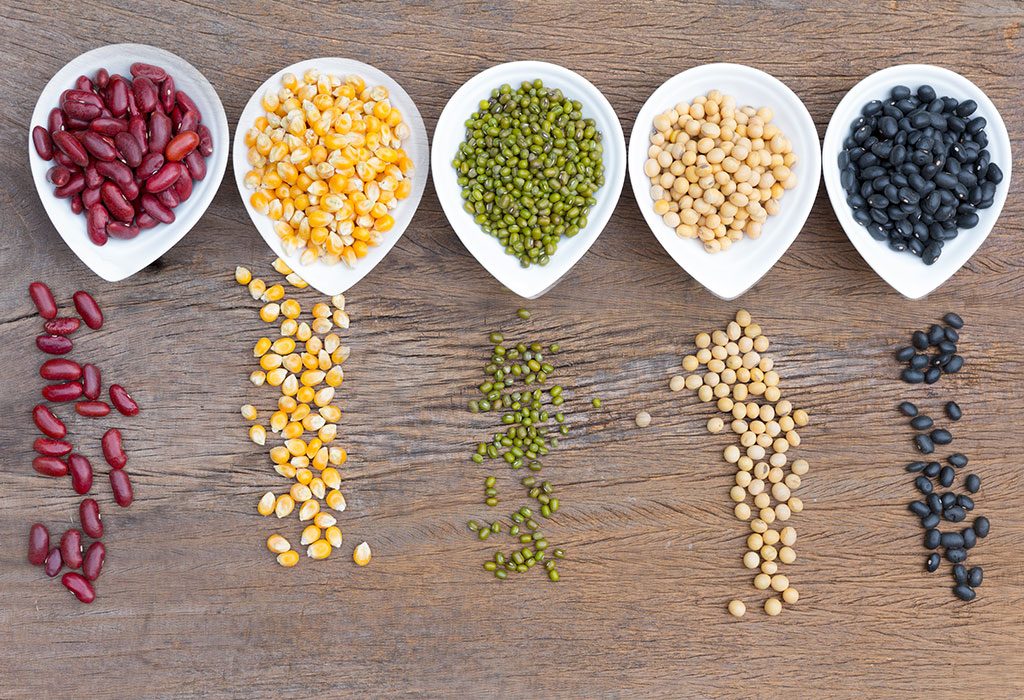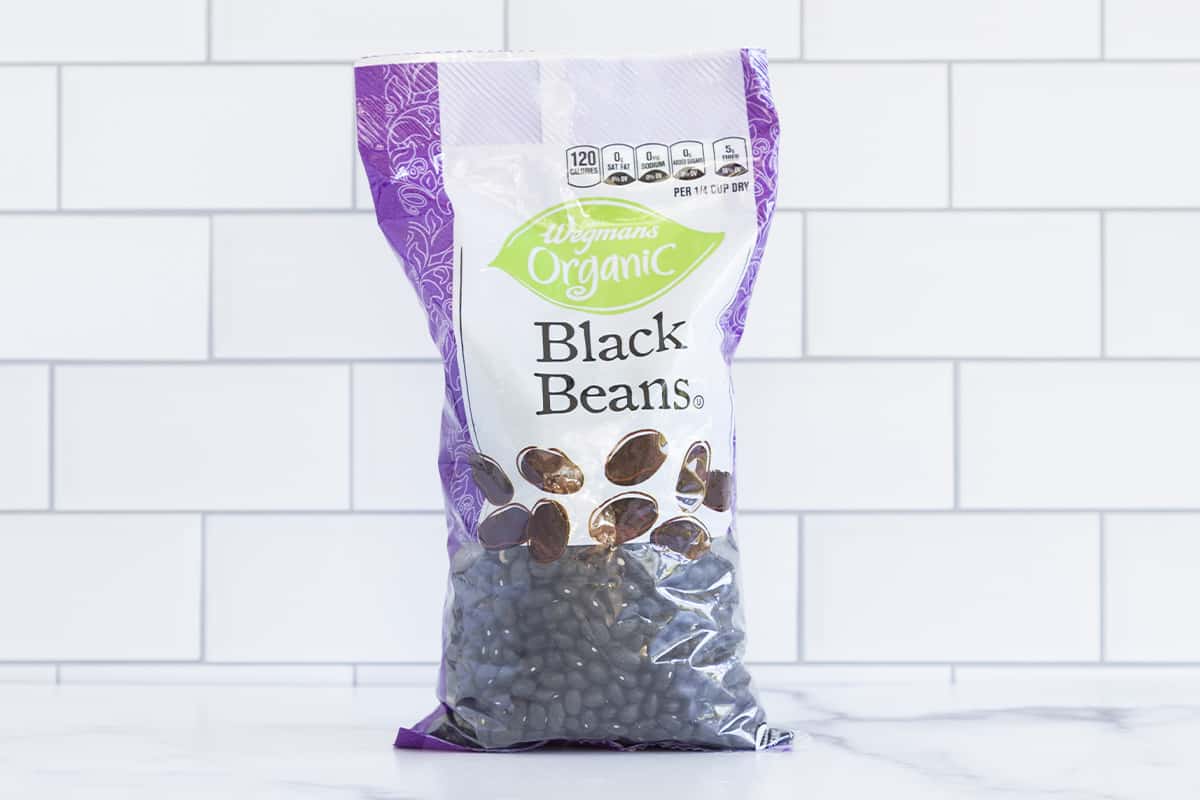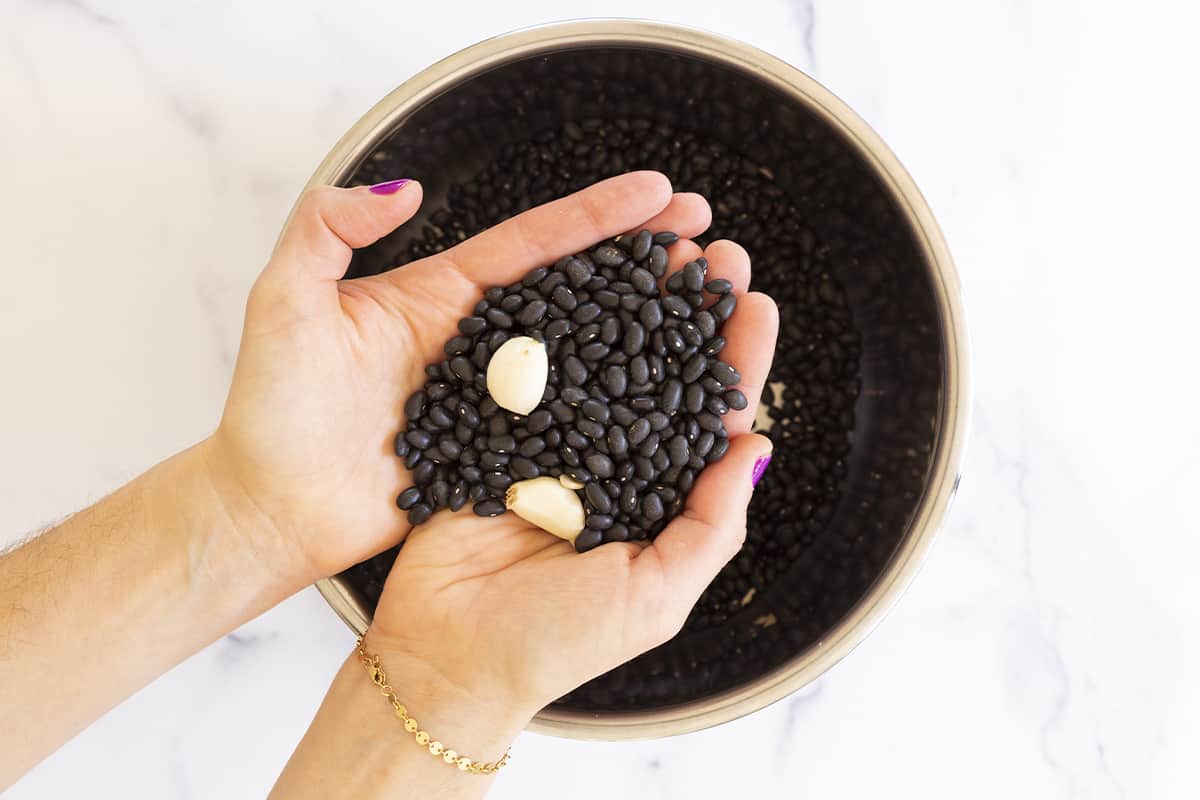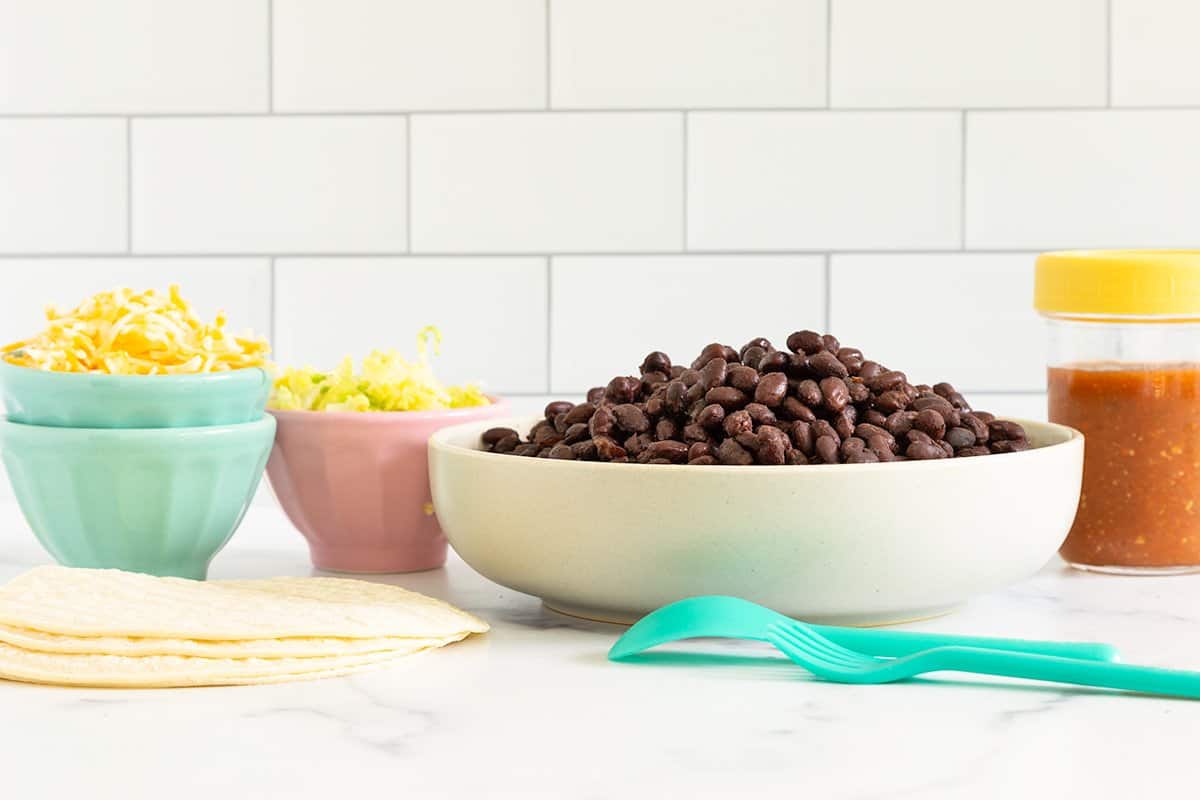Here are some easy ways to serve black beans to babies, whether they come from a can or are cooked from scratch.
How To Cook Beans For Your Baby
Beans are an excellent source of plant-based protein, fiber, iron, and other key nutrients that are important for your baby’s growth and development. Though small, beans pack a nutritional punch. Introducing beans to your baby early on can help set them up for a lifetime of healthy eating.
However, raw beans contain anti-nutrients like lectins and phytic acid that can block nutrient absorption. This is why it’s essential to always cook beans properly before feeding them to your baby. Proper preparation through soaking, cooking, and mashing can help reduce anti-nutrients and gas-causing compounds.
In this detailed guide. we will cover everything you need to know about cooking beans for your baby. including
- Bean preparation and cooking methods
- Tips for soaking and cooking times
- Safely mashing/pureeing beans
- Flavor combinations and seasonings
- Creative ways to incorporate beans into meals
- Storing cooked beans
Follow these steps and you’ll be able to easily introduce nutrient-dense beans into your baby’s diet.
Why Are Beans So Healthy For Babies?
Here’s a look at some of the top nutrients found in just 1 cup of cooked beans
- Protein: 8-15 grams
- Fiber: 11-17 grams
- Iron: 15-60% DV
- Folate: 60-90% DV
- Potassium: 15-30% DV
- Magnesium: 15-30% DV
- Phosphorus: 15-35% DV
- Copper: 15-45% DV
- Manganese: 30-50% DV
This stellar nutrition profile makes beans an excellent first food for babies around 6 months old. The protein aids growth and tissue repair. The fiber improves digestion. The iron prevents anemia. And the array of minerals supports bone health, metabolism, and nerve transmission.
The high fiber can cause gassiness, so introduce beans slowly. But the nutritional perks are well worth it. Beans are affordable, versatile, and can be served in many creative ways.
How To Buy Beans For Babies
You can purchase beans dried, canned, or pre-cooked. Here is an overview of each format:
-
Dried Beans – Require overnight soaking and hours of cooking, but no added salt or preservatives. Best flavor and texture.
-
Canned Beans – Convenient and ready to eat. Choose low-sodium, BPA-free options. Rinse before serving.
-
Pre-cooked Beans – Fully cooked and shelf-stable. Just heat and serve. Check for any additives.
For babies, dried or low-sodium canned beans are best. Whichever you choose, inspect for quality and ensure there is no damage or expired dates. When possible, opt for BPA-free packaging.
How To Prepare Dried Beans
Follow these steps when cooking dried beans from scratch:
-
Pick over dried beans and rinse well. Discard any rocks, debris, or shriveled beans.
-
Soak beans in water for at least 8 hours or up to 24 hours. Use 3 cups water per 1 cup beans.
-
Drain and rinse soaked beans. Place in a pot and cover with fresh water. Add 1 tsp salt per pound of beans.
-
Bring to a boil over high heat. Then reduce to low and simmer until beans are very tender and squish easily.
-
Check beans often and add more water if needed to keep submerged. Cook times range from 1-4 hours.
-
Once tender, drain beans and rinse well. Mash or puree to desired consistency before serving.
Soaking is key to properly prepare dried beans. It softens the beans, reduces anti-nutrients, and decreases cooking time. Always cook until beans are soft enough to squish between fingers. Undercooked beans can be tough on your baby’s digestive system.
How To Cook Canned Beans
Canned beans make meal prep fast and easy. Here are some tips for cooking with canned beans:
-
Rinse beans in a colander to remove excess sodium and can lining residue.
-
Simmer beans over medium heat with seasonings and liquid to enhance flavor.
-
Mash beans with a fork, potato masher, or food processor until smooth.
-
Incorporate into dishes or purees. Heat thoroughly before serving.
-
Opt for low-sodium or no-salt-added canned beans when possible.
When preparing canned beans, always inspect for damage prior to opening. Discard bulging, leaking, or heavily dented cans. Rinsing will help remove some sodium, but watch portions if using regular canned beans.
How To Mash Beans For Baby
Once cooked properly, beans need to be mashed, pureed, or otherwise softened before serving to baby. Here are some mashing methods:
-
Potato masher – Simple manual option. Allows some bean texture.
-
Fork – Requires a bit more elbow grease but can mash beans well.
-
Food processor – Blends to a perfectly smooth puree.
-
Blender – Great for quick bean dips and spreads. Add liquid to blend.
-
Bean press/mill – Specialty tool that purees beans super smooth.
-
Back of spoon – Press cooked beans against a bowl to flatten and mash.
Mashing beans helps remove rounded edges and reduce potential choking hazards. But leave some texture for developing chewing skills. Get beans as smooth or chunky as desired.
What Seasonings Go Well With Beans?
Plain beans have a mild flavor, so seasonings can jazz them up. Here are some easy ways to add flavor:
-
Onion, garlic, peppers – Build a flavor base.
-
Herbs – Cilantro, oregano, basil, thyme.
-
Spices – Chili powder, cumin, curry powder, taco seasoning.
-
Acid – Lemon juice, lime juice, vinegar.
-
Other – Salsa, tomato sauce, broth, barbecue sauce.
Start with small amounts of seasoning based on your baby’s preferences. Keep it simple at first. The beans themselves should be the star ingredient, with light seasoning to complement.
What Are Creative Ways To Serve Beans To Baby?
Thanks to their mild taste and soft texture, beans pair nicely with many ingredients. Here are some creative ways to incorporate beans into your baby’s meals:
-
Bean dip – Puree with Greek yogurt and serve with dippers.
-
Bean spread – Mash and spread on toast, pitas, or crackers.
-
Chili – Puree with ground meat and veggies.
-
Burritos – Mash beans and fill with cheese, rice, etc.
-
Soup – Blend into tomato, vegetable, or chicken noodle soup.
-
Salad – Toss whole or mashed beans onto mixed greens.
-
Fritters – Make bean patties with mashed beans and spices.
-
Side dish – Serve mashed beans alongside meat and veggies.
Get creative with plating and pairings! Beans add nutrition, substance, and texture to so many dishes.
How Should You Store Cooked Beans?
Leftover cooked beans stored properly will last about 5 days in the fridge or 6 months in the freezer. Here are some storage tips:
-
Let bean mixture fully cool before transferring to airtight containers.
-
Glass jars or plastic containers work well for storage.
-
Refrigerate for up to 5 days.
-
Freeze for up to 6 months.
-
When freezing, leave headspace to allow for expansion.
-
Portion into individual servings before freezing for easy thawing.
-
Transfer to the fridge to thaw or heat frozen beans gently over low.
Storing batches of cooked beans can save you prep time. Just thaw, reheat, and puree as needed into dips, spreads, and more for your little one.
Introducing Beans To Your Baby’s Diet
When starting solids around 6 months, beans are an excellent choice. Follow these tips for success:
-
Start slow with just a few tablespoons daily, and gradually increase.
-
Watch for signs of digestive discomfort like gassiness.
-
Offer mashed, pureed beans or incorporate into other foods.
-
Pair with iron-rich foods like meat and vitamin C foods to boost iron absorption.
-
Try one type of bean at a time to watch for potential allergies.
-
Be patient. It can take over a dozen exposures for baby to accept a new food.
With time and consistency, beans can become a dietary staple your baby loves. Take it slow, keep portions small, and get creative. With the proper prep and cooking techniques, beans make for an incredibly nutritious, plant-based addition to your baby’s developing palate.

Beans for Baby-Led Weaning
Any fully cooked beans can be mashed on a spoon or a stick of lightly toasted bread for babies so they can eat on their own (BLW style). This is an easy way to let them feed themselves.
They can use their finger to pick up the beans once they can pick up smaller pieces of food.

To make black beans for baby, you can start with cooked beans that you buy in a BPA-free can or carton. Or you can cook them from dry at home. I like to use my Instant Pot or slow cooker to make them because all you need is water and the machine does the rest.

Here’s the basic info on how to prepare beans at home for baby:
- If you start with canned or boxed cooked beans, drain them in a colander. Rinse them to get rid of the liquid in the can. This helps to freshen them and also remove excess salt. Warm slightly and add seasoning as desired.
- To cook beans from scratch, put them in a slow cooker or pressure cooker with water and garlic. Cook according to this easy black bean recipe. Drain.
- To serve as a finger food, mash just slightly.
- To puree, put beans in a blender and blend them until they are smooth. Slowly add water until you get the consistency you want.
How to Add Flavor to Black Beans
You can add a range of seasonings and other foods to black beans to make them more flavorful. Here are some favorites:

Baby beans can be kept in the fridge for up to five days or in the freezer for up to six months in a container that doesn’t let air in.
Well-cooked black beans can be given to babies as a puree, mashed on toast or a spoon as a BLW food, or as a finger food.
Start with a small amount of black beans that have been pureed. For older babies, serve slightly mashed beans as a finger food.
When cooked until soft, they should be easy for babies to digest. You may have some gas, which could simply be a reaction to a new-to-baby food.
EASY GREEN BEANS | BABY FOOD WEANING RECIPES | BEABA
FAQ
How to serve beans to a baby?
How do you boil beans for babies?
How to prepare black beans for 7 month old?
Can babies eat baked beans at 6 months?
How to prepare beans for baby?
Here’s the basic info on how to prepare beans at home for baby: If starting with cooked beans in a carton or can, drain them in a colander. Rinse them to remove the liquid that was in the can. This helps to freshen them and also remove excess salt. Warm slightly and add seasoning as desired.
Are pinto beans good for baby food?
Yes. Beans are rich in iron and fiber, and are excellent for babies’ health. Pinto beans have a creamy consistency and can be eaten by older babies in their whole form. For younger babies, it’s best to mash them before consumption.
Which kind of beans are needed to make baby food?
To make this easy protein-packed baby food, you just need well-cooked beans, such as chickpeas, black beans, pinto beans, or white beans. You can serve it plain or add a sprinkle of spices including cinnamon and cumin.
How do you cook green beans for a baby?
There are several different ways to prepare green beans for your baby. Here are some of our favorite ways: In a medium pot, bring 2 inches of water to a boil. Add the trimmed green beans to a steamer basket, cover, and cook over medium heat for 8-10 minutes or until fork tender. Let cool slightly.
